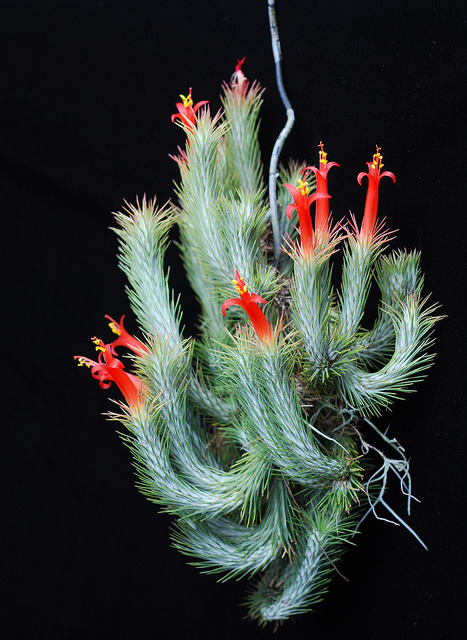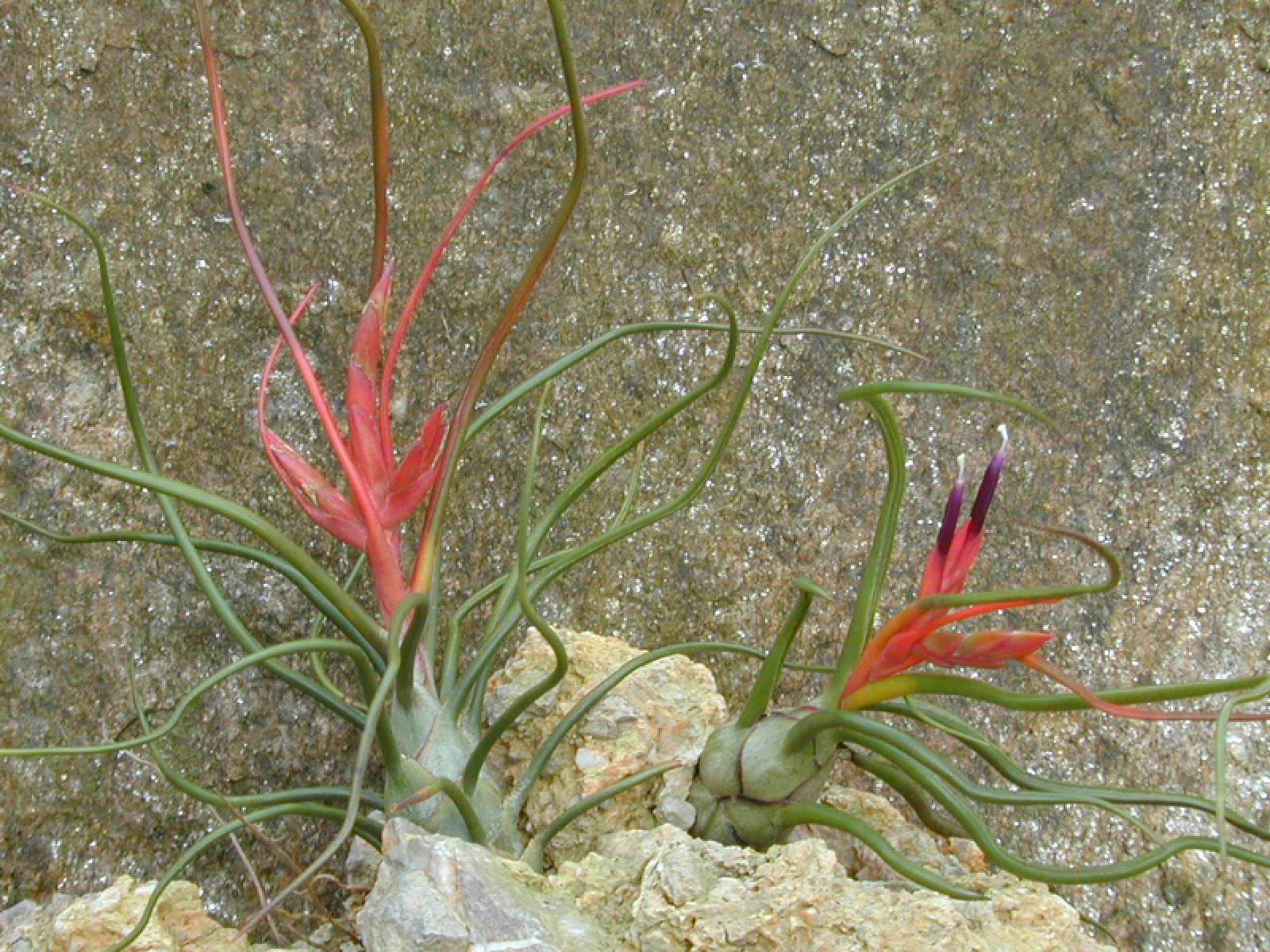Tillandsia is a genus of epiphytic bromeliads. An epiphyte is a plant that grows upon another plant but isn't a parasite, it's just there for the killer view. They get water and nutrients not from the ground but from dust and weather. Little hairs on Tillandsia called trichomes help catch and keep the moisture and dust close to the surface of the leaves to allow for easy absorption. Tillandsia do have roots but they're only really used to further help them cling to the whatever surface they're on.
Even though they collect enough nutrients and moisture in nature to survive, a domestic Tillandsia should probably be watered. It really, REALLY depends on where you live. I get away with dripping a few drops of water on my T. ionantha 'Druid' every weekend here in Oregon, but in the drier air of Colorado it was constantly drying out and getting brown tips even after being dunked in water for 2 minutes twice a week. If you're planning on growing some for yourself, monitor them closely for the first two weeks or so until you can get a good feel for the watering schedule.
Most sellers will tell you that Tillandsia is hard to kill and requires little to no attention. That's what they say about succulents too, but hopefully you all know better. They can dry out or rot if you play things wrong, but they're fairly forgiving. The thinner the leaves, the faster they dry out.
Tillandsia ionantha 'Fuego'
A clump of Tillandsia funckiana
Also, a fair warning, "Although not normally cultivated for their flowers, some Tillandsia will bloom on a regular basis. In addition, it is quite common for some species to take on a different leaf colour (usually changing from green to red) when about to flower. This is an indication that the plant is monocarpic (flowers once before dying) but offsets around the flowering plant will continue to thrive." - Wikipedia I was pretty bummed when I first found out, but with any luck a Tillandsia will make plenty of pups to replace it.
Tillandsia bulbosa
Tillandsia xerographica






Love Tillandsias, very cool little plants.
ReplyDeleteWonderful Creation ,,,I LİKED So Much this incredible Bromeliad
ReplyDelete